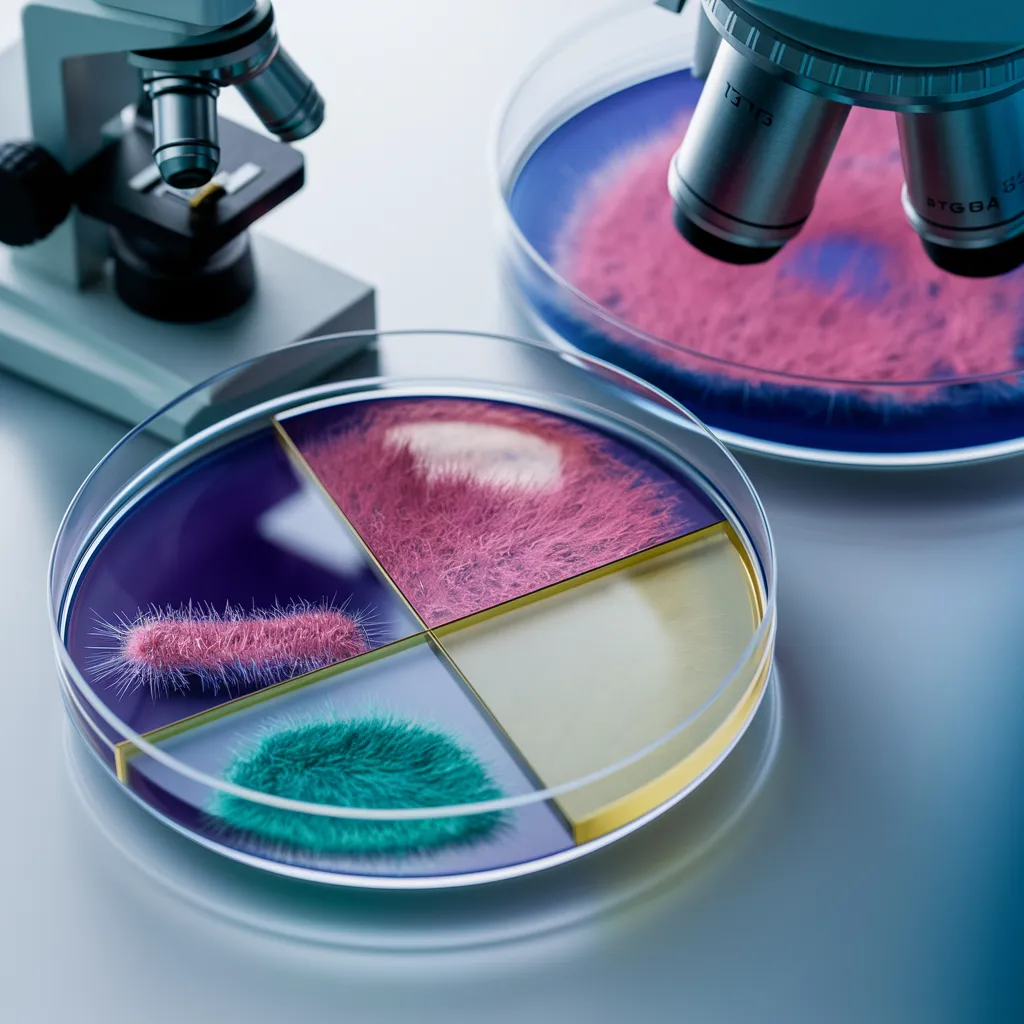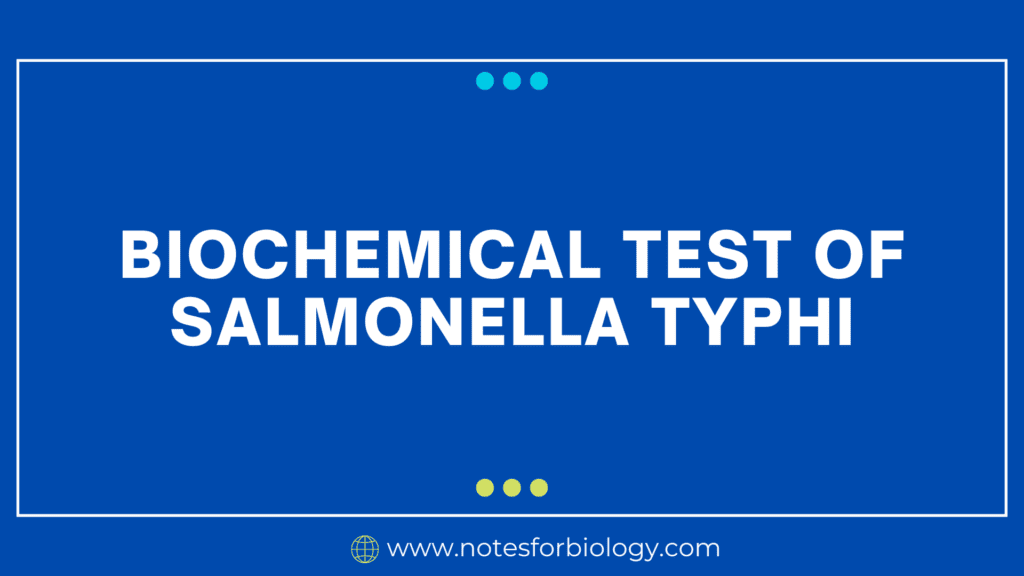Salmonella Typhi, the cause of typhoid fever, is a member of the Enterobacteriaceae family of bacteria. Diagnosis and treatment of Salmonella Typhi depend on accurate identification. Salmonella Typhi is distinguished from other bacteria by a variety of biochemical assays.
Table of Contents
What is Salmonella Typhi?
Salmonella Typhi is a bacteria that causes typhoid fever, a severe and potentially fatal infection. It belongs to the Salmonella genus, which is part of the Enterobacteriaceae family. Here are the main characteristics of Salmonella Typhi.

Biochemical Test of Salmonella Typ
1. Gram Staining
Purpose
The purpose is to determine the Gram reaction and morphology of the bacterium.
Procedure
Make a bacterial stain on a slide and heat-fix it.
Stain with crystal violet for one minute.
Apply the iodine solution for one minute (mordant).
Decolorize using ethanol or acetone for a few seconds.
For one minute, apply safranin as a counterstain.
Rinse with water, then blot dry.
Result
Salmonella Typhi appears as pink or red rods (Gram-negative bacilli) under the microscope
2. Oxidase Test
Purpose
The purpose of this test is to see if there is any cytochrome C oxidase enzyme.
Procedure
To proceed, moisten filter paper with oxidase reagent (tetramethyl-p-phenylenediamine).
Apply a small bit of the bacterial colony to the paper with a sterile loop.
Result
Negative (no color change). Salmonella Typhi does not manufacture the enzyme cytochrome oxidase.
3. Catalase Test
Purpose
To detect the presence of the catalase enzyme.
Procedure:
Place a drop of hydrogen peroxide onto a slide.
Using a sterile loop, combine a little amount of the bacterial colony and hydrogen peroxide.
Result:
positive (bubble forming). The appearance of bubbles shows that the catalase enzyme has broken down hydrogen peroxide into water and oxygen.
4. Triple Sugar Iron (TSI) Agar Test

Purpose
The goal is to differentiate bacteria based on their ability to ferment glucose, lactose, and sucrose, as well as produce hydrogen sulfide (H2S).
Procedure
Stain the slope and buttocks of the TSI agar with the bacterial specimen.
Incubate at 37°C for 18 to 24 hours.
Result
Alkaline (red) slant: There is no lactose or sucrose fermentation.
Acidic (yellow) buttocks: Fermentation of glucose.
Black precipitate: H2S production.
5. Urease Test
Purpose
The purpose of this test is to determine whether the enzyme urease can hydrolyze urea.
Procedure
Inoculate urea broth or agar with the bacterial specimen.
Incubate at 37°C for 24 to 48 hours.
Result
The result is negative (no color change). Salmonella Typhi doesn’t make urease
6. Indole Test
Purpose
To determine the ability to synthesize indole from tryptophan.
Procedure
Inoculate tryptophan broth with the bacterial specimen.
Incubate at 37°C for 24 to 48 hours.
Add the Kovac reagent.
Result
Negative (no red ring). Salmonella Typhi doesn’t make indole.
7. Methyl Red Test
Purpose
The goal is to discover stable acid end products resulting from glucose fermentation.
Procedure:
Inoculate MR-VP broth with the bacterial specimen.
Incubate at 37 °C for 48 hours.
Use a few drops of methyl red indicator.
Result:
The result is positive (red). This indicates mixed acid fermentation with stable acidic products.
8. Voges-Proskauer Test

Purpose
To detect acetoin synthesis during glucose fermentation.
Procedure
Inoculate MR-VP broth with the bacterial specimen.
Incubate at 37 °C for 48 hours.
Add the VP reagents (α-naphthol and KOH).
Result:
Negative (no red color). Salmonella Typhi doesn’t make acetoin.
Frequently Asked Question(FAQ)
What is Salmonella Typhi?
Salmonella Typhi is a bacteria that causes typhoid fever, a severe and potentially fatal infection. It belongs to the Salmonella genus, which is part of the Enterobacteriaceae family. Here are the main characteristics of Salmonella Typhi.
What are the Biochemical Test of Salmonella Typ?
The Biochemical Test of Salmonella Typ are:
1. Gram Staining
2. Oxidase Test
3. Catalase Test
4. Triple Sugar Iron (TSI) Agar Test
5. Urease Test
Related Article

